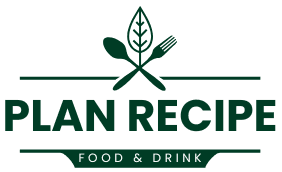Steak lovers know that the secret to an unforgettable, restaurant-quality steak isn’t just in the cut—it’s in the marinade. A well-crafted awesome steak marinade enhances flavor, tenderizes tough cuts, and creates that perfect juicy bite. Whether you’re grilling, pan-searing, or broiling, marinating your steak correctly can make all the difference.
Contents
Table of Contents
What is a Awesome Steak Marinade and Why is it Important?
A steak marinade is a liquid mixture of ingredients designed to flavor and tenderize meat before cooking. It typically includes a balance of acid, fat, and seasonings to break down tough muscle fibers and infuse the steak with depth.
Without a good marinade, even a high-quality cut can turn out bland or chewy. A well-made marinade not only enhances taste but also locks in moisture, ensuring a juicy, tender steak every time.

The Key Ingredients of an Awesome Steak Marinade
Creating an awesome steak marinade isn’t just about throwing ingredients together. It’s about balance—combining elements that enhance the meat’s natural flavors while tenderizing it for the juiciest bite. Let’s break down the must-have ingredients that make a marinade truly remarkable.
Soy Sauce: The Umami Booster
Soy sauce is a game-changer when it comes to marinades. It’s packed with glutamates, which intensify the meat’s natural umami flavor. Unlike table salt, which only seasons the surface, soy sauce penetrates deep into the fibers, ensuring a savory, well-seasoned steak.
To maximize its effect:
- Use low-sodium soy sauce if you prefer a less salty marinade.
- Combine it with Worcestershire sauce for extra depth.
Olive Oil: Enhancing Moisture and Tenderness
A good marinade needs fat to prevent the meat from drying out. Olive oil not only coats the steak, locking in moisture, but also carries fat-soluble flavors from herbs and spices deep into the meat.
For the best results:
- Use extra virgin olive oil for a richer taste.
- Combine with fresh herbs like rosemary or thyme for added depth.
Acids: The Role of Lemon Juice, Vinegar, and Worcestershire Sauce
Acids are the tenderizing agents in marinades. They break down the proteins in steak, making even tougher cuts softer and more flavorful. The key is moderation—too much acid can turn the meat mushy.
- Lemon juice or lime juice: Adds a bright, citrusy note.
- Balsamic or red wine vinegar: Gives a rich, tangy kick.
- Worcestershire sauce: A perfect blend of vinegar, molasses, and anchovies that adds depth and umami.
Garlic and Herbs: Adding Depth to the Flavor
No awesome steak marinade is complete without garlic and herbs. Garlic infuses the steak with a bold, aromatic punch, while herbs like rosemary and thyme provide earthy, woodsy undertones.
Tips for best use:
- Fresh garlic is better than garlic powder for an authentic flavor.
- Crush the garlic slightly before adding it to the marinade to release more oils.
- Experiment with fresh vs. dried herbs—dried herbs are more concentrated, while fresh herbs provide a more delicate taste.
Sweeteners: Balancing Flavors with Honey or Brown Sugar
A touch of sweetness helps balance the acidity and saltiness in a marinade. It also caramelizes when the steak hits the grill, creating a beautiful sear.
Popular sweeteners include:
- Honey: Adds a subtle floral note and helps create a crisp crust.
- Brown sugar: Gives a rich, molasses-like sweetness that pairs well with smoky flavors.
Now that you know the key components of a great marinade, let’s explore the best recipes to try at home.

How to Awesome Steak Marinade Properly for the Best Results
Even the most awesome steak marinade won’t deliver great results if you don’t use the right marinating techniques. Proper marination ensures the flavors penetrate deeply while keeping the steak juicy and tender. Here’s how to do it right.
Choosing the Right Cut: What Steaks Work Best with Marinades?
Not all steaks need marination. Tender cuts like ribeye, filet mignon, and strip steak have enough natural marbling to be flavorful on their own. However, marinades work wonders on tougher cuts, helping them break down and absorb more moisture.
The best steaks for marination include:
- Flank steak: Lean and fibrous, benefits greatly from marinating.
- Skirt steak: Perfect for fajitas and grilling.
- Sirloin: A balance of tenderness and beefy flavor.
- Hanger steak: Best when marinated to maximize its rich, beefy taste.
How Long Should You Marinate Your Steak?
Timing is crucial when it comes to marination. While a short soak can add flavor, longer marination allows acids and enzymes to tenderize the meat.
- 30 minutes to 2 hours: Enough for thinner cuts like skirt or flank steak.
- 4 to 8 hours: Ideal for thicker steaks like sirloin or hanger steak.
- Over 12 hours: Only recommended for very tough cuts. Longer marination can make the meat mushy.
For the perfect side dish to complement your marinated steak, consider creamy mashed potatoes. Check out this comprehensive guide on Bob Evans Mashed Potatoes for a simple yet delicious addition to your meal.
Proper Techniques: Sealing, Refrigeration, and Resting
- Use a zip-top bag or airtight container. This ensures the steak is fully coated while reducing air exposure.
- Refrigerate while marinating. Never leave raw meat at room temperature for extended periods.
- Turn the steak occasionally. This helps the marinade absorb evenly.
- Let it rest before cooking. Take the steak out of the fridge 30 minutes before cooking to ensure even cooking.
Should You Rinse Off the Marinade Before Cooking?
A common mistake is cooking steak with excess marinade still on it. While you don’t need to rinse it off completely, patting the steak dry with a paper towel is essential. This removes excess moisture, allowing for a proper sear and crust formation when cooking.
Cooking Techniques for the Best Awesome Steak Marinade
Now that your steak is marinated to perfection, it’s time to cook it right. Choosing the best cooking method ensures that all those bold flavors shine through while giving you a juicy, mouthwatering bite.
Grilling vs. Pan-Searing: Which Cooking Method Works Best?
Both grilling and pan-searing have their own advantages, and the best method depends on the steak cut and your personal preference.
Grilling:
- Best for ribeye, flank, and sirloin steaks.
- Gives the steak a smoky charred flavor.
- Cooks evenly when flipped only once.
Grilling tip: Preheat the grill to high heat (450-500°F). Sear for a few minutes per side, then move to indirect heat to finish cooking.
Pan-Searing:
- Ideal for thicker cuts like New York strip or filet mignon.
- Creates a deep golden crust.
- Allows you to baste with butter, garlic, and herbs.
Pan-searing tip: Use a cast-iron skillet for even heat distribution. Heat oil until shimmering, then sear each side for 2-4 minutes before finishing in the oven if needed.
The Role of Searing in Flavor Development
Searing isn’t just about looks—it’s about locking in juices and intensifying flavor. A well-seared steak forms a Maillard reaction, a chemical process that creates complex, savory flavors.
To achieve the best sear:
- Use high heat to quickly brown the surface.
- Avoid overcrowding the pan or grill—too much steam prevents proper searing.
- Flip only once to develop a thick crust.
Cooking Temperatures for the Perfect Steak Doneness
Steak doneness is a personal choice, but using a meat thermometer ensures perfect results every time.
- Rare: 120-125°F – Cool red center, very soft texture.
- Medium-rare: 130-135°F – Warm red center, tender and juicy.
- Medium: 140-145°F – Slightly firm with a warm pink center.
- Medium-well: 150-155°F – Slightly pink with less juice.
- Well-done: 160°F+ – Brown throughout, firmer texture.
Pro tip: Remove the steak from heat 5°F before the target temperature—it will continue cooking as it rests.
Resting the Steak: Why It Matters for Juiciness
After cooking, resist the urge to cut into your steak immediately. Letting it rest for 5-10 minutes allows the juices to redistribute, keeping the steak tender and flavorful.
To rest properly:
- Place the steak on a cutting board and loosely tent it with foil.
- Wait before slicing to retain maximum juiciness.
FAQs on Awesome Steak Marinades
When it comes to marinating steak, many home cooks have common questions about ingredients, techniques, and best practices. Here are answers to the most frequently asked questions about making an awesome steak marinade.
What’s the Best Thing to Marinate Steaks In?
The best marinade balances acid, fat, salt, and flavor enhancers. A classic go-to marinade includes:
- Soy sauce (for umami and salt)
- Worcestershire sauce (for tang and depth)
- Olive oil (to keep the steak juicy)
- Lemon juice or vinegar (to tenderize)
- Garlic and herbs (for aroma and complexity)
This combination works well for almost any cut and guarantees a deeply flavored, tender steak.
How Does Gordon Ramsay Marinate Steak?
As mentioned earlier, Gordon Ramsay prefers quick, simple seasoning over long marination. He enhances steak by using:
- Olive oil, fresh garlic, and rosemary
- Room temperature resting for 30 minutes
- Basting with butter and herbs while cooking
This method ensures a rich, natural beef flavor with a perfect crust.
What Is the Best Ingredient to Tenderize Steak?
Several ingredients help break down proteins and make steak more tender:
- Pineapple juice or papaya – Contains enzymes that naturally soften meat.
- Yogurt or buttermilk – The lactic acid gently tenderizes without overdoing it.
- Vinegar or citrus juice – Helps soften fibers but should be used in moderation.
For the best results, avoid over-marinating, as too much acid can turn the steak mushy.
How Do You Marinate Steak to Make It Tender?
To ensure a tender, juicy steak, follow these key marinating steps:
- Choose a balanced marinade with an acid (like lemon juice), oil, and seasonings.
- Let the steak marinate for 30 minutes to 8 hours, depending on the cut.
- Pat the steak dry before cooking to get a proper sear.
- Cook at high heat to lock in juices.
Conclusion: Elevate Your Steak with the Perfect Marinade
A well-crafted awesome steak marinade can take your steak from ordinary to extraordinary. By understanding the science behind marination, selecting the right ingredients, and following expert cooking techniques, you can achieve restaurant-quality results at home.
Whether you prefer a bold, smoky BBQ marinade, a savory soy-based blend, or a tangy balsamic and mustard mix, the key is finding a balance of acid, fat, and seasoning to enhance both flavor and tenderness. Don’t forget to pat your steak dry before cooking for the perfect sear, and always let it rest before slicing to lock in juices.
With these tips, recipes, and techniques, you’re now equipped to make the most flavorful and juicy steak every time. Experiment with different marinades, try new ingredients, and make each steak uniquely delicious.
Ready to put your new knowledge to the test? Try one of the best steak marinades from this guide and impress your family or guests with an unforgettable meal!

Awesome Steak Marinade: Best Recipes & Expert Tips
Ingredients
- ½ cup soy sauce
- ¼ cup Worcestershire sauce
- ¼ cup olive oil
- 2 tbsp balsamic vinegar
- 2 tbsp honey or brown sugar
- 4 garlic cloves minced
- 1 tbsp Dijon mustard
- 1 tsp black pepper
- 1 tsp dried rosemary or 2 sprigs fresh rosemary
- 1 tsp smoked paprika optional for a smoky flavor
Instructions
- Prepare the marinade: In a medium-sized bowl, whisk together soy sauce, Worcestershire sauce, olive oil, balsamic vinegar, honey, garlic, Dijon mustard, black pepper, rosemary, and smoked paprika.
- Marinate the steak: Place the steak in a resealable plastic bag or a shallow dish. Pour the marinade over the steak, ensuring it is completely coated. Seal the bag or cover the dish with plastic wrap.
- Refrigerate: Let the steak marinate in the refrigerator for at least 30 minutes or up to 8 hours for maximum flavor. Flip the steak halfway through the marination process for even coating.
- Prepare to cook: Remove the steak from the marinade and pat it dry with paper towels to remove excess moisture. This helps achieve a perfect sear.
- Cook the steak: Grill, pan-sear, or broil the steak to your desired doneness (see the cooking tips in the article for temperatures).
- Rest and serve: Let the steak rest for 5-10 minutes before slicing. Serve and enjoy!
